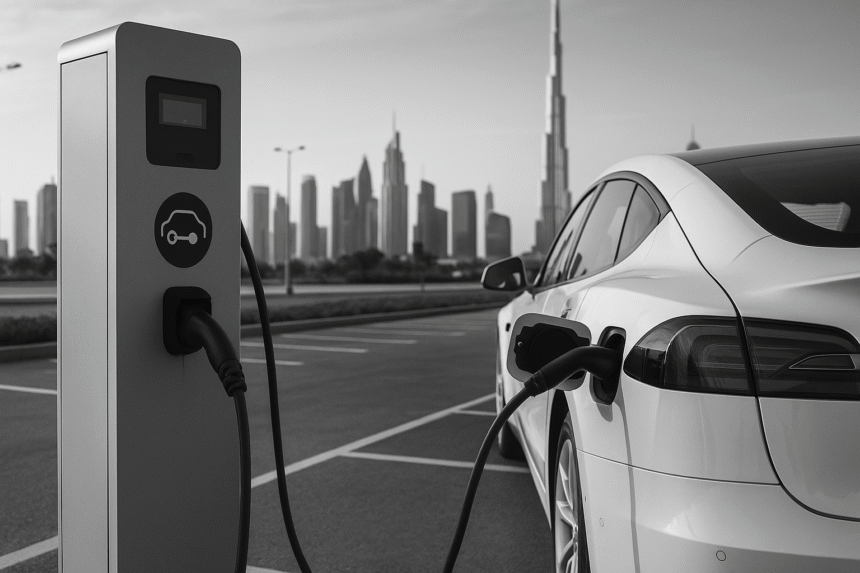Building UAE’s EV Charging Infrastructure: What’s Missing?
The UAE is making bold moves toward electrifying its roads. With government strategies aligned to net-zero goals and sustainability agendas, UAE EV charging infrastructure is becoming a top priority. But while progress is underway, several foundational gaps still stand between the current setup and a truly future-ready network.
This article takes a business-focused look at what’s already in place, what’s missing, and how public-private collaboration can close the gap.
Current Overview of the UAE EV Charging Infrastructure
The UAE EV charging infrastructure has seen steady growth over the past five years. As of 2025:
-
Dubai Electricity and Water Authority (DEWA) has deployed over 380 Green Charger stations.
-
Abu Dhabi National Oil Company (ADNOC) Distribution operates 90+ fast-charging stations, with plans to scale up to 200 by the end of 2025.
-
Sharjah, Ajman, and Ras Al Khaimah are catching up with smaller but steadily growing public networks.
Still, most of the infrastructure is concentrated in Dubai and Abu Dhabi, leaving the northern emirates underserved. Many private-sector players also report inconsistent data on charger availability and speed types (slow vs. fast), highlighting the need for standardization and transparency.
Key Gaps in the UAE EV Charging Infrastructure
Despite strong momentum, several pain points persist:
1. Uneven Geographic Distribution
Dubai leads the way, but smaller emirates like Umm Al Quwain and Fujairah have far fewer charging options. This imbalance discourages long-distance EV adoption and limits full market penetration.
2. Fast-Charging Accessibility
The majority of chargers are slow (AC). High-power DC chargers are limited, especially outside major urban zones. Fleet operators and logistics firms find this to be a major operational bottleneck.
3. Grid Readiness
As EV demand surges, grid capacity and resilience come into question. Upgrades are needed to handle high-volume charging, particularly at malls, depots, and public parking areas.
4. Business Model Challenges
Private investors and contractors hesitate to enter the market due to:
-
High upfront installation costs.
-
Delayed ROI.
-
Regulatory ambiguity on tariffs and land use.
How Public-Private Partnerships Can Help
Governments can’t close the infrastructure gap alone. Collaboration with suppliers, developers, and utility providers is essential.
Examples of Public-Private Models Working
-
E2GO, a joint venture between TAQA and ADNOC Distribution, plans to install 70,000 EV charging points in Abu Dhabi by 2030.
-
Private operators like CATEC, Siemens, and ABB have won tenders by aligning with DEWA’s vision and proving readiness on technical and compliance fronts.
Key Levers for Effective Collaboration
-
Incentives for local assembly and charger integration.
-
Streamlined permitting for new station installations.
-
Data sharing between public networks and private apps to improve user visibility.
The Role of Smart Charging and Grid Tech
Building smart, future-ready infrastructure means moving beyond plug-and-charge setups. The next wave of UAE EV charging infrastructure should:
-
Incorporate smart load balancing to optimize electricity usage.
-
Enable solar-powered charging hubs, especially in off-grid or industrial areas.
-
Include dynamic pricing models based on grid demand and time-of-day use.
These features will not only reduce the grid burden but also make the investment case stronger for the private sector.
What CEOs and Infrastructure Providers Should Consider
If you’re involved in infrastructure, construction, utilities, or transport services, here are key steps to align with the UAE’s EV transition:
-
Audit your sites for grid connectivity and zoning permissions.
-
Partner with approved vendors with DEWA/ADDC-compliant certifications.
-
Apply early for permits, especially in high-demand locations like malls, residential compounds, and logistics hubs.
-
Explore funding models, including government grants, joint ventures, and public-private consortia.
Conclusion: The Road Ahead
The UAE is moving fast, but it still needs to plug the gaps in its EV ecosystem to meet sustainability goals. UAE EV charging infrastructure is no longer just a utility issue — it’s a strategic investment space with strong ROI potential for those who plan ahead.
Stakeholders in government and business alike must think beyond quantity and focus on quality, reliability, and smart scalability.
If you’re building in the UAE, now is the time to act — not just to meet regulatory benchmarks, but to lead the next phase of transport innovation.



Leave a Reply